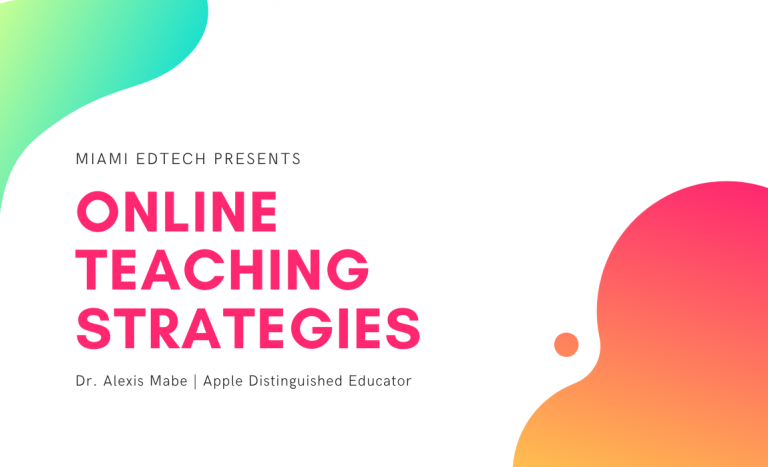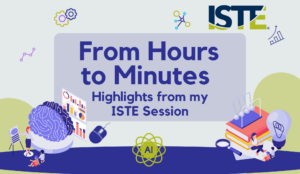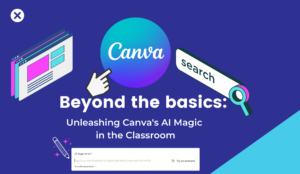Not that long into the pandemic, I read an article by AJ Julini titled This is Not Online or Distance Learning. In it, he calls what we are currently doing Emergency Remote Learning because it was not planned for.
As we look to the future, so much is uncertain, but chances are, remote learning will be a part of our reality. At my own school, we are planning for a mix of in person and distance learning, with half the kids home and half the kids in class on any given day.
Even though we don’t know exactly what the next school year is going to look like, we can now plan for remote learning. As scary as that might be, I think if we frame it the right way, it is exciting and presents a lot of new opportunities.

We have the chance to completely reimagine how we do things. As we moved into Emergency Remote Learning, I had conversations with some teachers who were frantically trying to figure out how to give multiple choice tests and keep kids from cheating. I heard ideas like “we can have them on their iPad and then require a second device aimed to see their iPad and their face.” I was blown away. Blown away because the teacher was looking for substitutes to help her keep things the same.
What I have been encouraging educators to do is to celebrate all the new possibilities. Sometimes when we are stuck in the trenches on a daily basis it is hard to find the motivation to change when we have so much going on. However, since we have been ripped out of our trench NOW is the time to implement NEW ways of doing things.
Here are a few ideas that will make your life easier, will keep the kids more engaged, and is more conducive to a virtual workflow:
Implement Differentiated Instruction – giving students voice and choice and allowing them to move through recorded lessons at their own pace.
- Ways to create lessons that allow for voice and choice include:
- Hyperdocs – More than just hyperlinked documents!
- Choice Boards – Including Menus, Playlists and Think-Tac-Toes
- Ways to record your lessons that allows students to work through it at their own pace:
- Loom – allows you to record your screen and show your face at the same time!
- Nearpod – use the self-paced option and record voice overs on your slides, you can also insert questions along the way to collect data on student comprehension.
- Classkick – also allows you to record voice overs on slides, but you can watch students working and give immediate feedback in real time from anywhere.
- Split screen – if you’re an Apple user, you can screen record your split screen and have your camera set on one screen so you can record your face while speaking.
Prioritize longer, student-driven assignments – we can now rethink our summative assessments. Instead of multiple choice tests, we can focus on options that still allow the students to think critically and can incorporate the 4Cs. A plethora of frameworks are out there, but a few places to start include:
- Project-Based Learning – you can check out PBLWorks for a ton of resources!
- Challenge-Based Learning – similar to PBL, but the kids, well, tackle a challenge instead of complete a project.
- The Launch Cycle – uses design thinking as a backbone.
Move from consumption to creation – instead of just consuming information, students should also be creating. Apple has made a very useful curriculum called Everyone Can Create if you need ideas on how to get started and make amazing things on native Apple apps. My students are always teaching me about new ways to create things, some of what I have learned from them:
- Canva – where students can design anything
- Anchor – where students can make podcasts
- Carrd – allows students to create one page websites
- Powtoons – helps you make animated videos
Incorporate Social-Emotional Learning techniques – SEL is now more important than ever. We are currently dealing with a Global pandemic and worldwide protests over the treatment of black people in the United States. I came across the image below, created by Jay Dostal, in an article titled 4 Ideas for Student-Led Learning During Emergency Remote Teaching by George Curous. As George says, “Focus on connection first, everything else second. And a very DISTANT second.” A few places to look for SEL resources:
- Common Sense Education has an SEL toolkit for educators and they also offer social and cultural literary resources for including social justice and equity in our lessons.
- You can find over 100 free resources for SEL here.

In response to the worldwide protests, please take the time to read the article “Why White Students Need Multicultural and Social Justice Education” written by Sheldon Eakins. An incredibly useful list of additional resources is also included at the end of the article. In the piece he writes:
“This is not a post about how we need to teach students to embrace diversity and love each other. It’s about the influence we can and should have on our students. Dr. Gloria Ladson-Billings taught us that we teach what we value. Therefore, we are part of the problem if we refuse to teach about antiracism and speak out against police brutality. Our students look up to us as adults, and many of our students mimic our behavior. If we are silent around social justice matters, we send a loud message to our students about where we stand as these issues impact many of the communities we serve.”
A few additional tips:
- Be organized and consistent – students can sense chaos from a mile away. Having and communicating a clear plan will go a long way to for students to feel secure and confident. Once we went virtual, my students went to the same place to check in, always had a warm-up to do for attendance, always found a list of things to do and a voicenote or video from me explaining things.
- Have one place where students go to for their assignments – For me this is Showbie, an app that allows my classroom to be essentially paperless. No matter where I sent my students for their lesson for the day, they always found it in Showbie.
- Give rapid meaningful feedback – timely feedback is always important, however, in a virtual learning environment, it is even MORE important. Giving feedback on what the students submit shows them that we are just as connected and involved in the class as we expect them to be.
- Break larger assignments into smaller parts – when students are at home on their own they can have trouble with time management. Breaking larger assignments into smaller parts helps motivate them and makes things seem more manageable.
As educators, there is always something new to learn. The current state we are in is even more of a reminder. Our students need us to put the effort into change. Their wellbeing and success depends on it.





